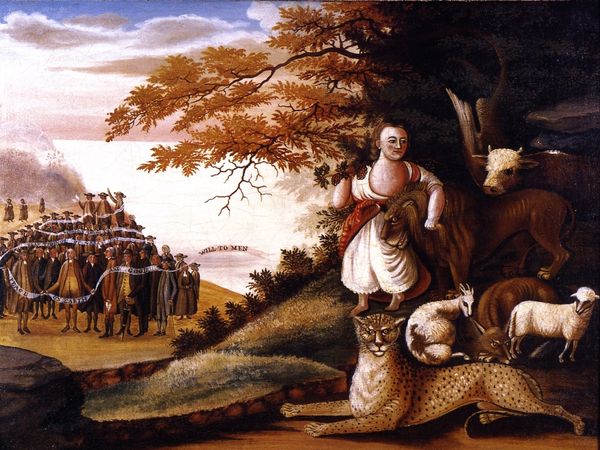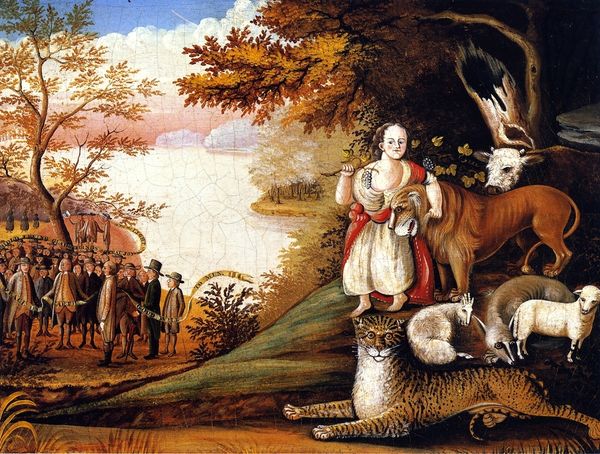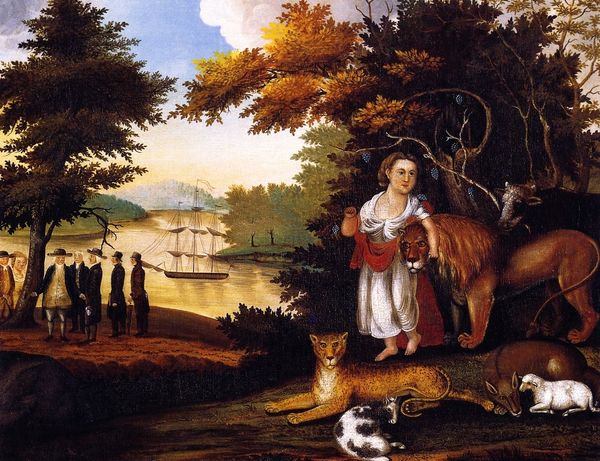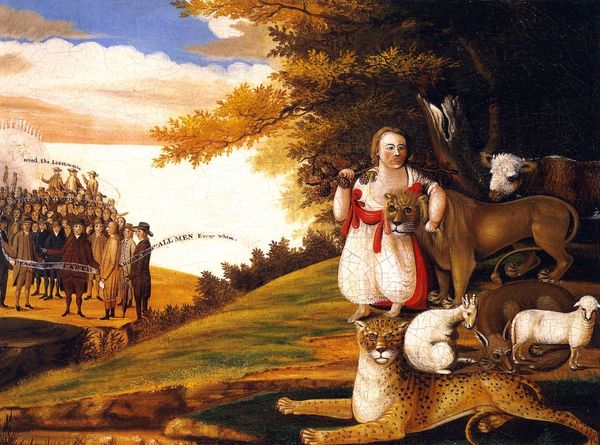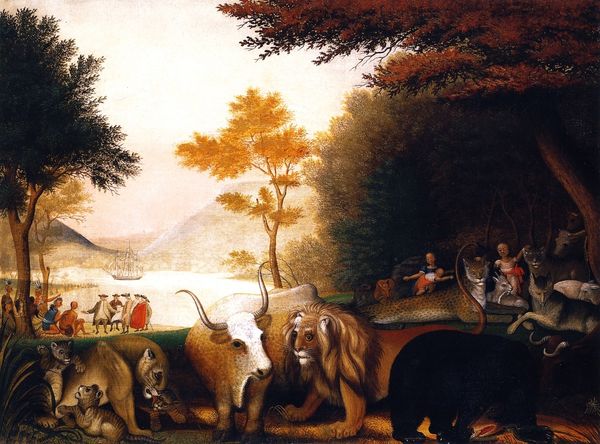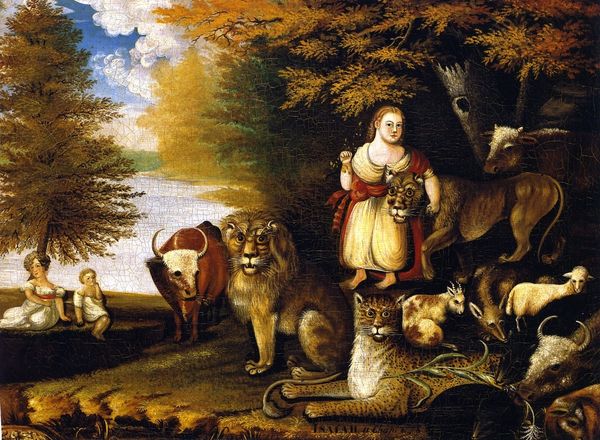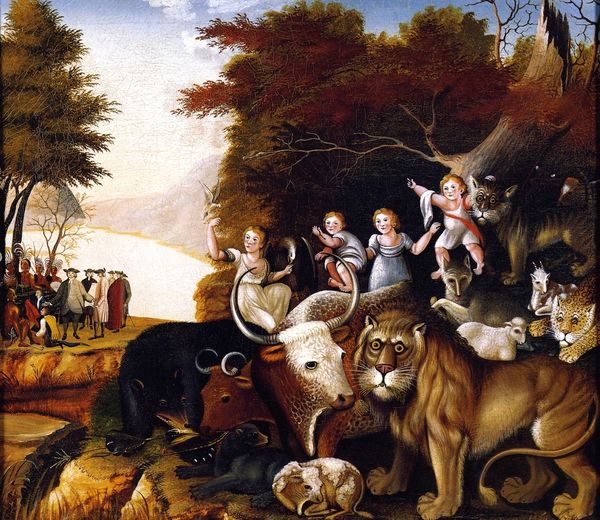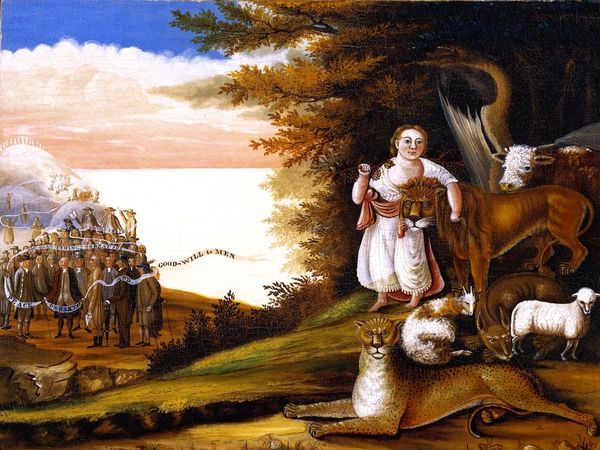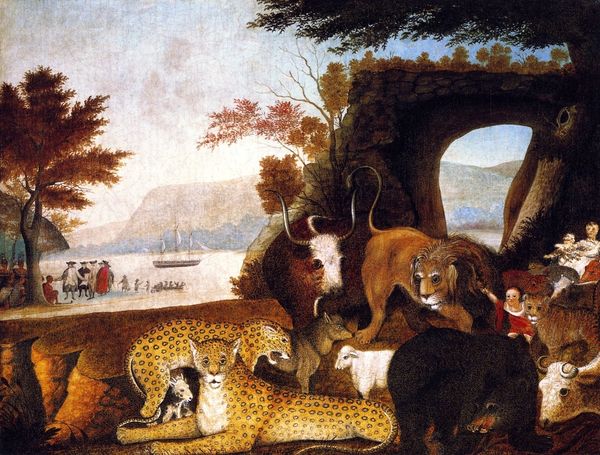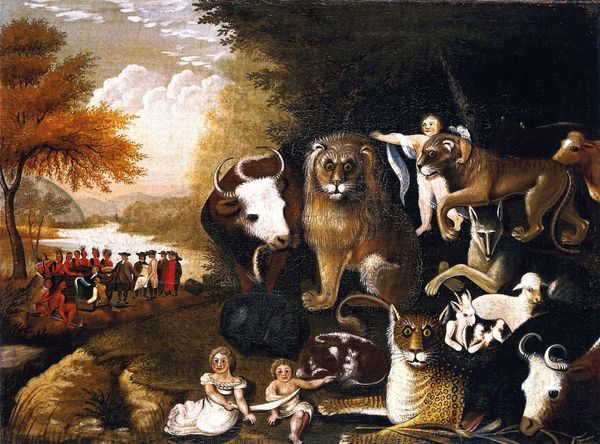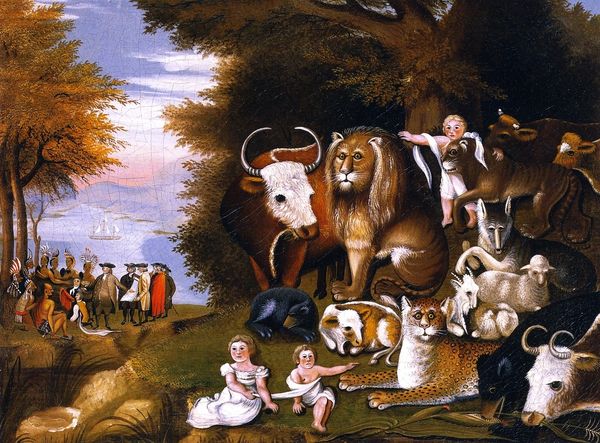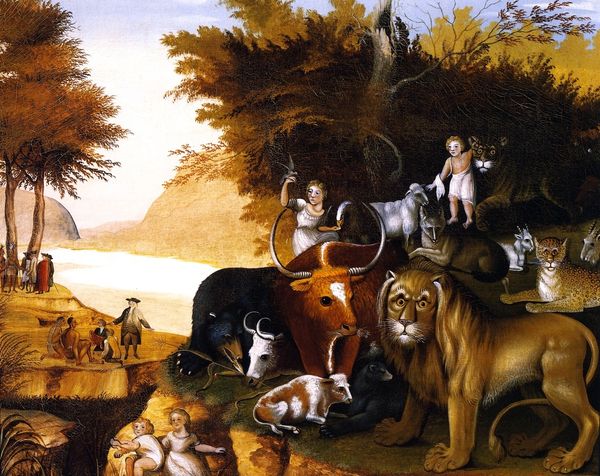
painting, oil-paint
#
allegory
#
narrative-art
#
fantasy art
#
painting
#
oil-paint
#
landscape
#
figuration
#
oil painting
#
romanticism
#
genre-painting
Copyright: Public domain
Editor: This is Edward Hicks’s "Peaceable Kingdom" from 1830, rendered in oil paint. It strikes me as incredibly idealistic. What's fascinating is this contrast between wild and domestic, with animals seemingly coexisting harmoniously. How do you interpret this work? Curator: Well, it's more than just an idealistic scene. Consider Hicks's Quaker background. The painting promotes a vision of social harmony that was deeply intertwined with Quaker beliefs. Hicks was living during a period of great social and political change. How might that context inform his imagery? Editor: So, the painting's about societal issues rather than purely religious? I suppose that grouping of people in the background adds a civic element. They seem to represent a negotiation. Curator: Exactly! The figures in the background represent William Penn's treaty with the Lenape Indians, a foundational moment of peaceful co-existence in Pennsylvania’s history. The very act of representing that scene implicates Hicks’ social concerns as a member of the Quaker community. And where do you see evidence of his personal views? Editor: Hmm... perhaps it is the direct quotation of scripture embodied as figures carrying signs. Curator: Precisely, but do not lose track of what made the landscape genre, and his take on romanticism so impactful as he used recognizable American settings to deliver allegories related to cultural ideologies of progress, American exceptionalism, and colonial settlement. Editor: That really changes how I see it. It's not just a charming scene of animals, it's a comment on early American ideals and how they contrasted with the reality of the time. Thanks. Curator: And I've learned again that we cannot look at art without looking around the time the art was made. Otherwise, it is merely decoration.
Comments
No comments
Be the first to comment and join the conversation on the ultimate creative platform.
